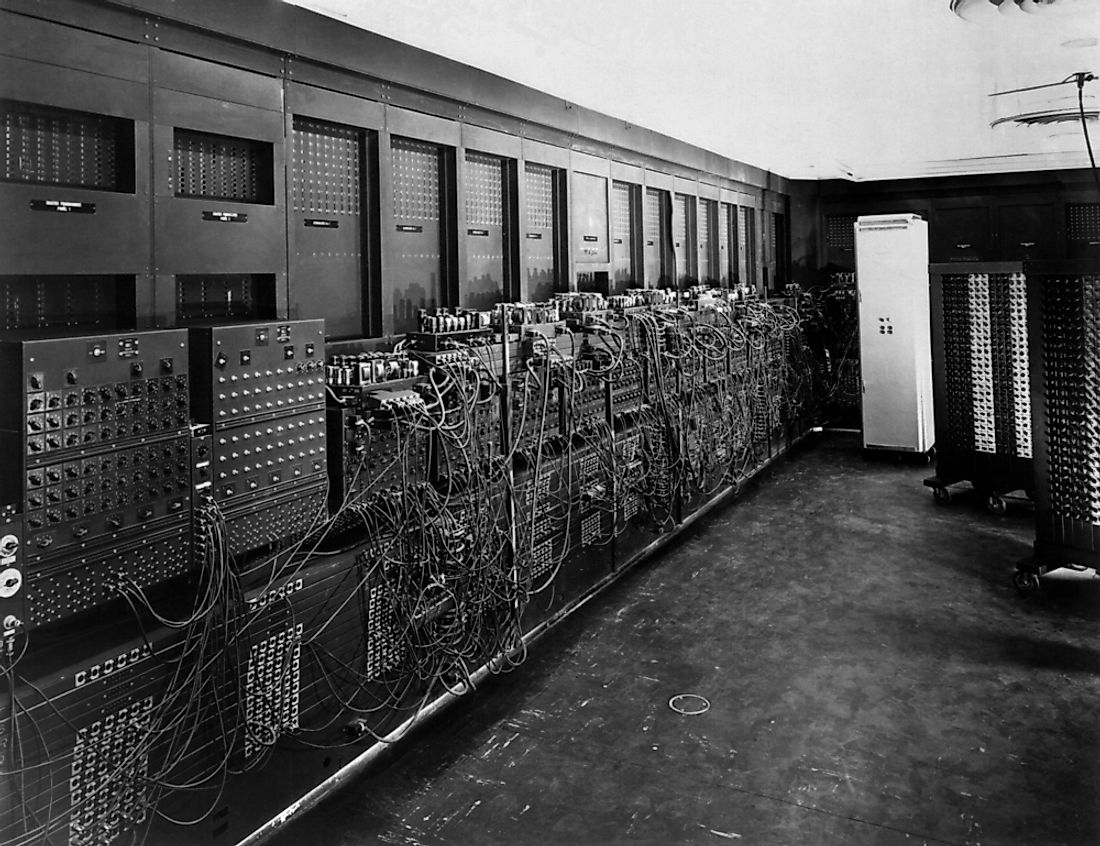Who Invented the Computer?

There are arguments that the first computer to be invented was the abacus or the slide rule, which is its descendant, invented in 1622 by William Oughtred. However, the first machine invented that resembled a computer was the Analytical Engine. This was a device conceived and designed between 1833 and 1871 by Charles Babbage, a British mathematician.
Before Charles Babbage’s invention, a computer referred to any person that sat all day subtracting and adding numbers while tabulating the results. Later the tables would appear in books for other people to use and complete tasks, e.g., calculating taxes.
Charles Babbage was inspired by number-crunching in the first place. In 1790, Napoleon Bonaparte ordered a switch from the initial imperial measurement systems to a new metric system. For over a decade human beings (who were essentially the computers) calculated making necessary conversions and completed tables. Bonaparte was, however, unable to publish the tables.
Charles Babbage visited the city of light in 1819 where he viewed unpublished tables one after the other. He wondered whether there was a way such tables would be produced in bulk, faster, with less workforce and having fewer mistakes. Thinking of the numerous marvels that the Industrial Revolution had generated, he imagined of creative inventors who worked hard to develop cotton gin and the steam machine and was inspired that a machine too would be made to do calculations.
He returned to England and opted to construct a machine, with his vision being something he called the Difference Engine. This machine functioned using the finite differences which meant making difficult mathematical calculations as well as division. In 1824 he secured the government idea after which he spent eighteen years in the perfection of his idea. His funding, however, ran out in 1832 when he produced a working sample of the table-making machine he had envisioned.
After this Babbage turned his attention to the Analytical Engine, which was a magnificent idea. This would make more complex calculations which included multiplication and division.These machines components resembled those of any computer in the market today. It had a CPU and a memory. Babbage however referred to the CPU as “mill” and the memory as “the store.” He also had what he called “the reader,” a device that he used to input instructions. He also had a printer which would record the results that his analytical engine generated on paper.
Charles Babbage’s invention existed on paper, and he kept volumes of sketches about the computers. Although he never did build a single model of the analytical engine, his vision about how it would look and work was so clear. Technology during those days would not deliver on Babbage’s motivated design until in 1991. On this year, Babbage’s particular ideas were put together to make a working computer. This was done by the Science Museum in London, which built a Difference Engine according to Babbage’s specifications. The machine weighed 15 tons, had 8,000 moving parts and stood 11 feet long and 7 feet tall.











